Western Mediterranean
Type of resources
Available actions
Topics
INSPIRE themes
Keywords
Contact for the resource
Provided by
Years
Representation types
Update frequencies
status
Scale
-
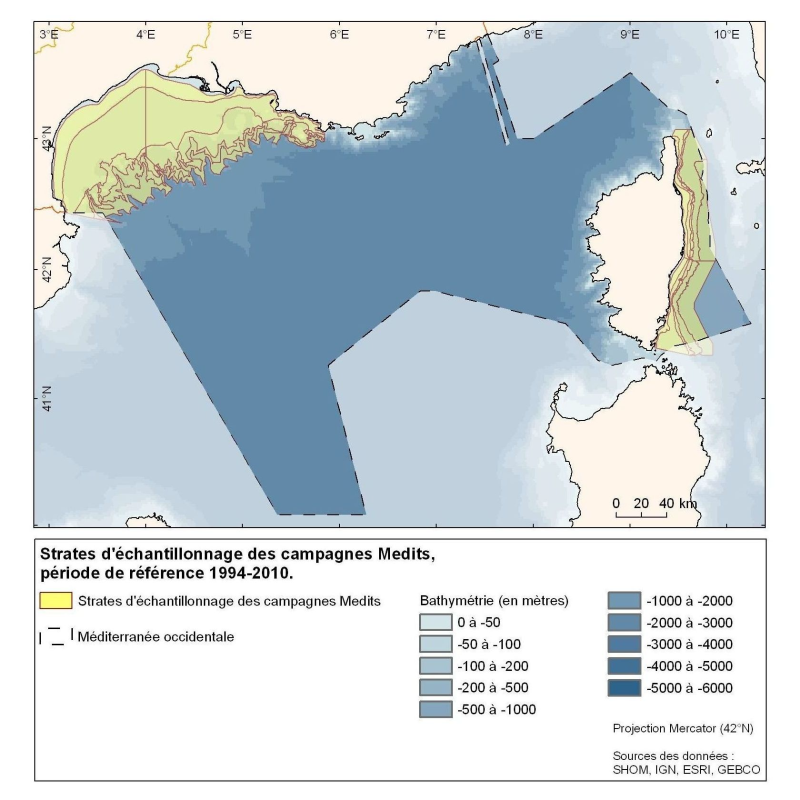
Polygons defined for the sampling points distribution in the Medits campaigns. MEDITS, 2007. International bottom trawl survey in the Mediterranean (Medits). Instruction manual. Version 5. Ifremer, Nantes. http://archimer.ifremer.fr/doc/00002/11321/. 60 p.
-
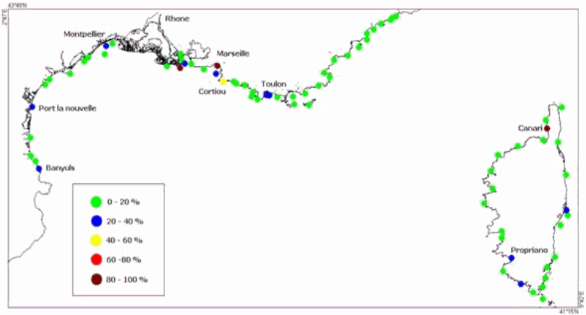
-
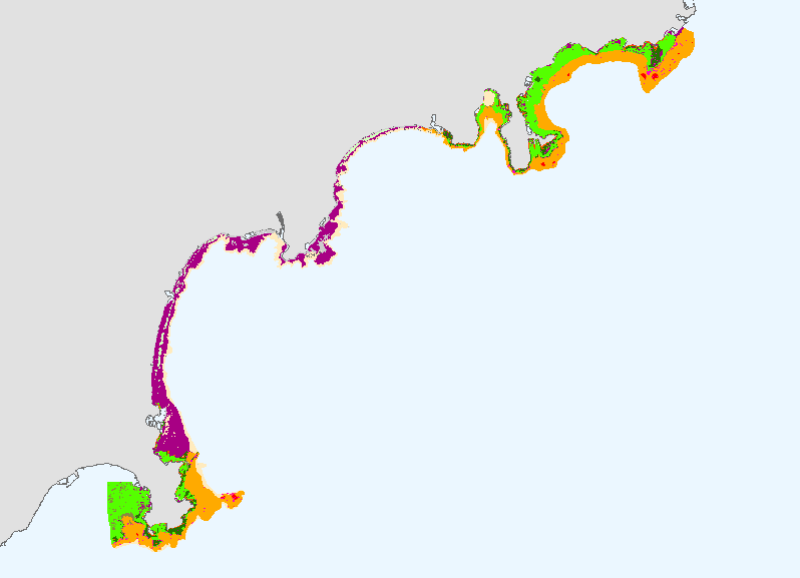
This mapping of marine biocenoses between 0 and 50m depth covers 75km of coastline between Antibes and Cap d'Ail.
-

-
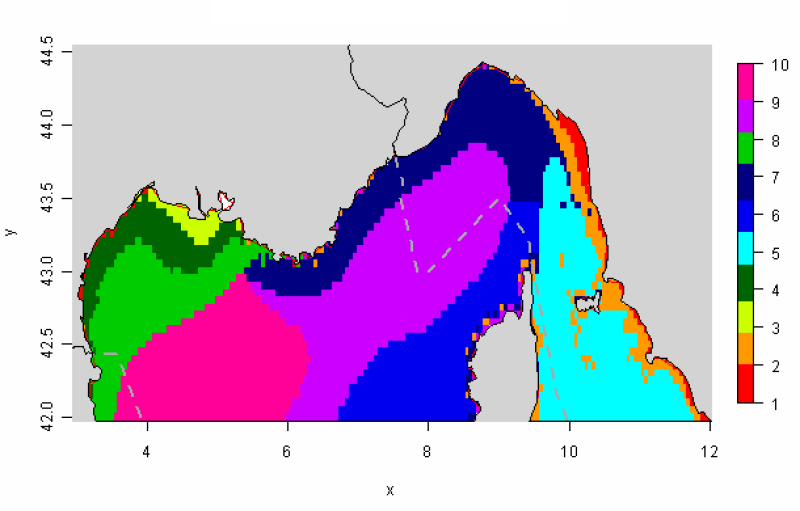
The distribution of hydrological landscapes is determined by a method of comparing multi-tables, to identify groups of individuals with similar variability of hydrological conditions during the year. The data used provides monthly tables showing the five selected physical parameters (SS, Phi, SST, MES et CHLA), calculated over the entire geographical area, a common resolution of 0.05°. This method identifies 10 hydrological landscapes showing a similar annual variability of hydrological conditions.
-
Censuses of nutrient salt monitoring stations in the western Mediterranean sub-region (1962 to 2010)
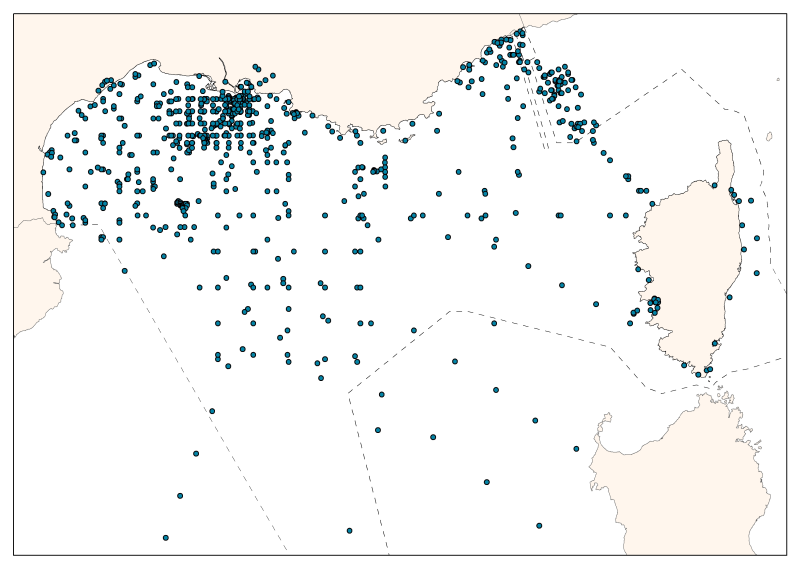
The consolidated database shows the spatial distribution of sampling effort by French and Monaco oceanographic campaigns. The measures are divided between the mouth of the Rhone, the Gulf of Lions, and Ligurian and Provence seas. The database contains 55 campaigns or time series, over 5 decades from 1962 to 2010. 28 are oceanographic campaigns of spatial strategy (some were revisited), 14 of temporal strategy, 2 of spatio-temporal strategy, and 1 one-time campaign. In total, it has 24,886 entries including: 19,027 nitrate data - 13,826 nitrite data - 11,452 ammonium data – 20,936 phosphates data – 14,605 silicates data. The majority (92%) of associated temperature and salinity data is available.
-
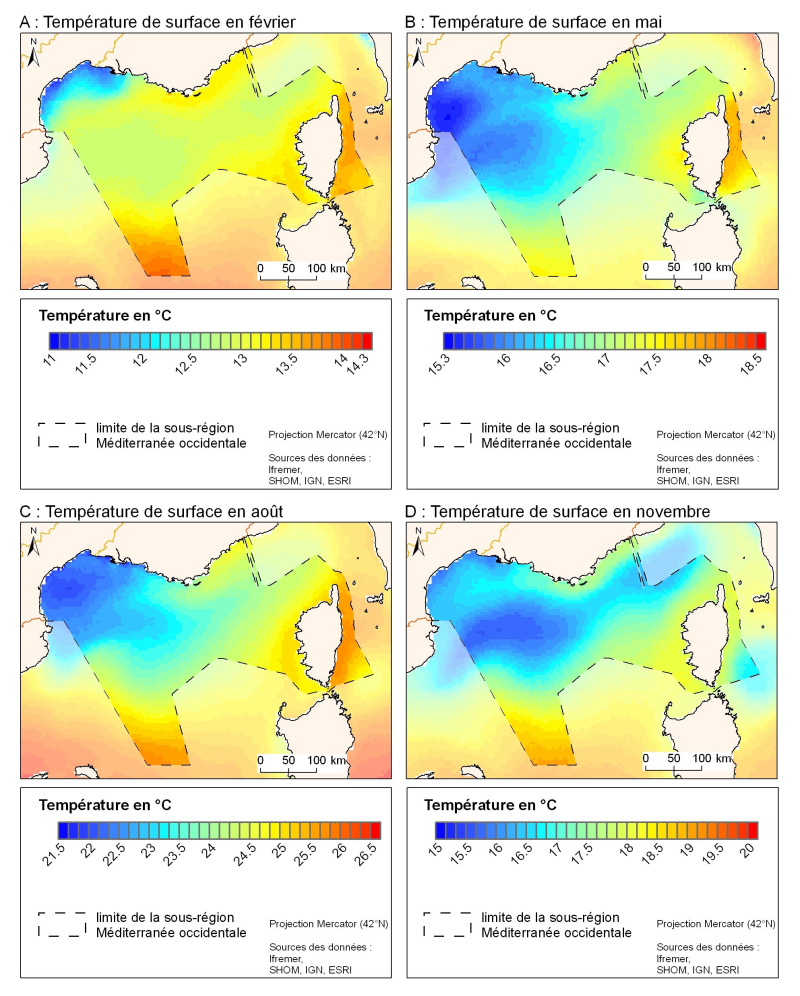
The spatial resolution from satellite climatology provides a more detailed description of spatio-temporal variations of surface temperature in the northern part of the western basin. Climatology exists for the surface temperature based on satellite infrared measurements which provides a spatial resolution on the order of kilometres.
-
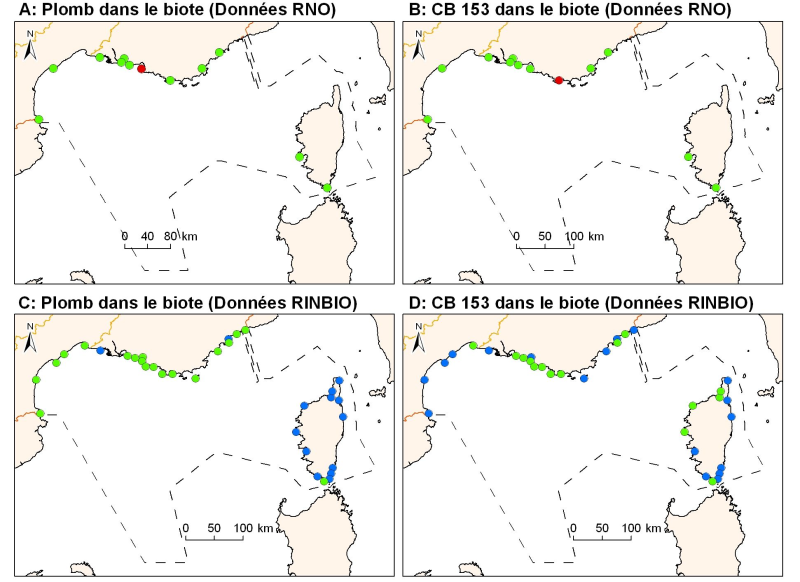
Concentrations of metals, organochlorines in mussels and oysters from the Mediterranean coast, from RNO RINBIO data.
-
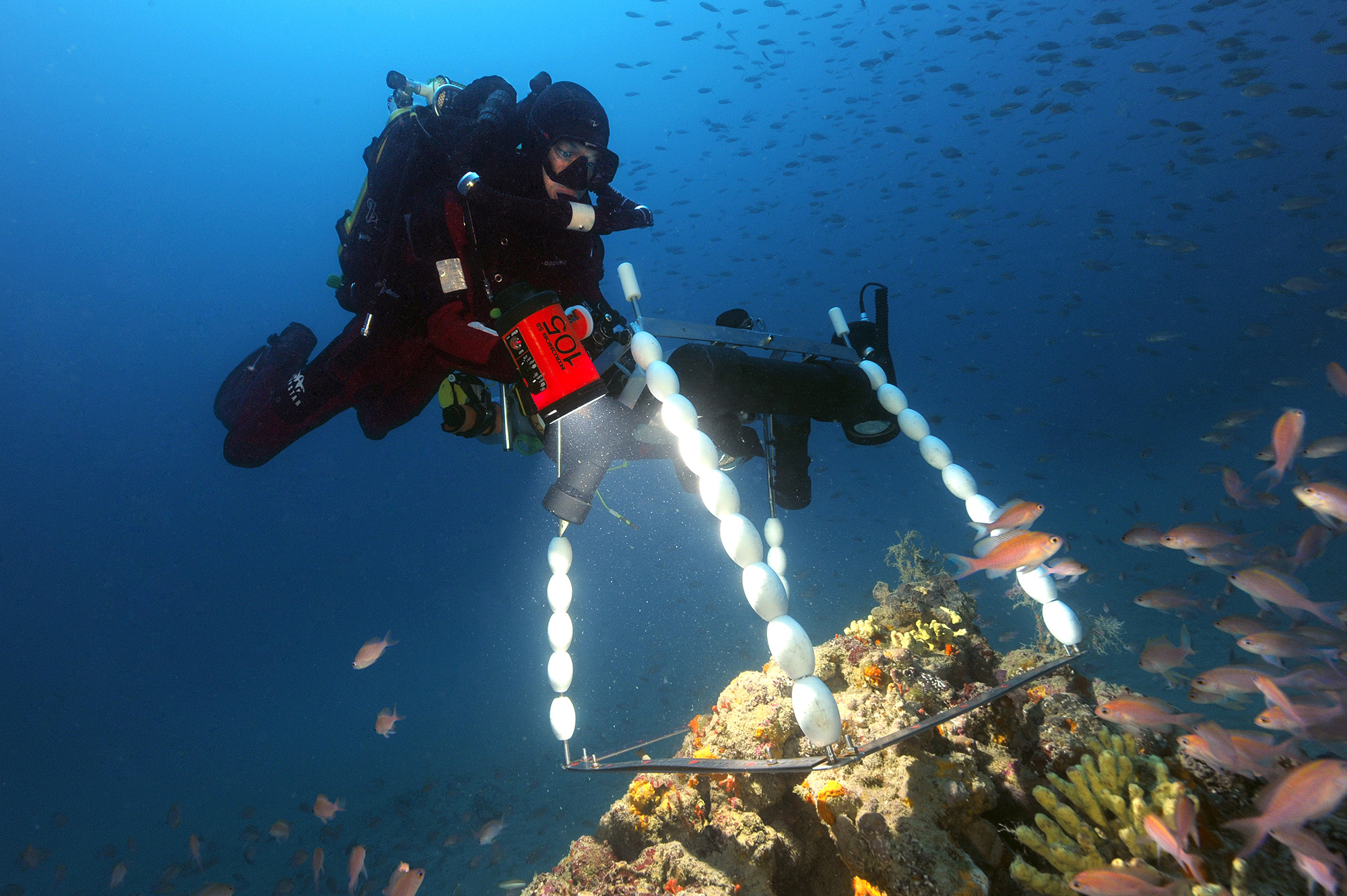
-
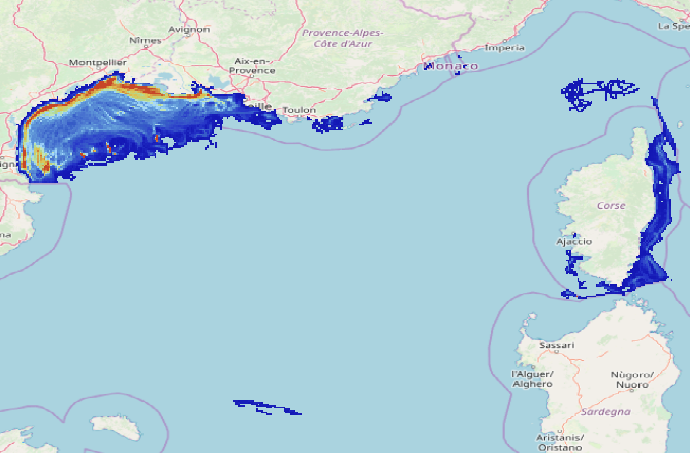
Data on physical impact intensity caused by trawling (bottom otter trawl, twin bottom otter trawl, dredges) estimated from VMS (Vessel Monitoring System) data cross-referenced with the Community Fishing Fleet Register and, for French vessels, with the landing data between 2008 and 2020. The data is constituted of 14 rasters in a resolution of 1’x1’ (13 annual abrasion rasters between 2008 and 2020 and 1 raster representing the 90th percentile of inter-annual abrasion). The abrasion is expressed in swept area ratio per year for each layer. This work enabled the study of the trawling impact on benthic communities in the Gulf of Lions and Corsica. The objective was to better describe the spatial and temporal repartition of trawling in this area and its potential impact on benthic habitats.
 Mon GéoSource
Mon GéoSource